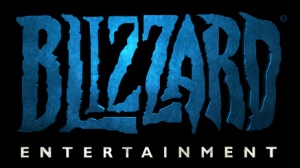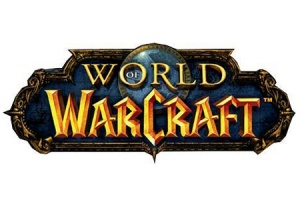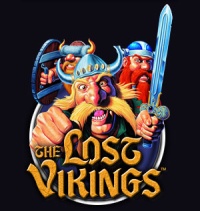Difference between revisions of "Blizzard Entertainment"
(→Ethical Issues) |
|||
| Line 7: | Line 7: | ||
== Background Information == | == Background Information == | ||
| − | Blizzard Entertainment began as a company under the name "Silicon & Synapse" founded in February of 1991 by Allen Adham, Michael Morhaime, and Frank Pearce, all of whom graduated from UCLA. | + | Blizzard Entertainment began as a company under the name "Silicon & Synapse" founded in February of 1991 by Allen Adham, Michael Morhaime, and Frank Pearce, all of whom graduated from UCLA. <ref name=moby>http://www.mobygames.com/company/blizzard-entertainment-inc/history</ref> |
| − | In 1994, the company established the name "Blizzard" and was acquired by Davidson & Associates. | + | In 1994, the company established the name "Blizzard" and was acquired by Davidson & Associates. <ref name=moby></ref> |
| − | In 1996, CUC International purchased Davidson & Associates along with Blizzard. | + | In 1996, CUC International purchased Davidson & Associates along with Blizzard. <ref name=moby></ref> |
In 1997, CUC International and HFS Corporation merged to form Cendant Software, and a year later, Cendant Software sold Blizzard to Havas, which soon was purchased by Vivendi. | In 1997, CUC International and HFS Corporation merged to form Cendant Software, and a year later, Cendant Software sold Blizzard to Havas, which soon was purchased by Vivendi. | ||
Revision as of 20:43, 18 December 2011
Blizzard Entertainment Inc. is a video game developing and publishing company based in Irvine, California. The company was founded on February 8, 1991 by three UCLA graduates. They are most famous for creating the Starcraft, Warcraft, and Diablo computer game series', as well as the world famous MMORPG World of Warcraft.[1]
Contents
Background Information
Blizzard Entertainment began as a company under the name "Silicon & Synapse" founded in February of 1991 by Allen Adham, Michael Morhaime, and Frank Pearce, all of whom graduated from UCLA. [2]
In 1994, the company established the name "Blizzard" and was acquired by Davidson & Associates. [2]
In 1996, CUC International purchased Davidson & Associates along with Blizzard. [2]
In 1997, CUC International and HFS Corporation merged to form Cendant Software, and a year later, Cendant Software sold Blizzard to Havas, which soon was purchased by Vivendi.
In December of 2007, Vivendi and Activision Publishing Inc. merge, Blizzard becomes part of the company under the name Activision Blizzard.
Games
Blizzard Entertainment has focused mainly on PC games throughout the lifetime of the company, though in their early years they also produced games for the Super Nintendo Entertainment System, Sega Genesis, and Gameboy Advance. [3] Their first breakthrough game, Warcraft: Orcs and Humans, published in 1994, became the anchor and first of many games in the Warcraft series. Not that long after, Diablo and StarCraft were published and released in 1996 and 1998, respectively. These three games were the beginnings of the three main franchises of Blizzard Entertainment.
Warcraft Series
- Main Article: World of Warcraft
Beginning with Warcraft: Orcs and Humans, the Warcraft series has grown to include three games and three expansion packs:
| Year | Title |
|---|---|
| 1994 | Warcraft: Orcs and Humans |
| 1995 | Warcraft II: Tides of Darkness |
| 1996 | Warcraft II: Beyond the Dark Portal* |
| 1999 | Warcraft II: Battle.net Edition* |
| 2002 | Warcraft III: Reign of Chaos |
| 2003 | Warcraft III: The Frozen Throne* |
| 2004 | World of Warcraft |
| 2007 | World of Warcraft: The Burning Crusade* |
| 2008 | World of Warcraft: Wrath of the Lich King* |
| 2010 | World of Warcraft: Cataclysm* |
| TBA | World of Warcraft: Mists of Pandaria** |
* denotes game was released as an expansion pack
** denotes upcoming expansion pack
The original six games in the Warcraft series are real-time strategy (or RTS) games, in which the user collects resources, creates a base, and controls an army. Real-time strategy games rely more on strategy and teamwork than most other types of video games. Warcraft originally began with two races, Orcs and Humans, however in Warcraft III, Blizzard introduced two more races, Night Elf and Undead. The series changed genres, becoming Massively Multiplayer Online Role Playing Games starting with World of Warcraft.
Defense of the Ancients
Also in Warcraft III, another type of map was introduced. Commonly named Dota, the Defense of the Ancients is a custom map for Warcraft III. The aim of this game is to destroy a heavily guarded structure in the middle of your opponets base. Instead of the normal controls in an RTS, this specific game is a role-playing game in that the user controls a hero. By leveling up this hero, the user and his teammates go head on head with the users of the opposite team. This map is extremely popular and has heavily influenced several new games. Examples of these games include the League of Legends (LoL), Demigod, and Heroes of Newerth. In fact for LoL, it has been called a "Dota clone" because it is so similar to Dota.
There is also a song from DJ Basshunter that is about playing Dota.
Diablo Series
Diablo was created by Blizzard North, a specific division of Blizzard Entertainment, and released in 1996. It has grown to include three games with a fourth title expected to release soon.
| Year | Title |
|---|---|
| 1996 | Diablo |
| 2000 | Diablo II |
| 2001 | Diablo II: Lord of Destruction* |
| 2012** | Diablo III |
* denotes game was released as an expansion pack
** denotes expected release date
The Diablo series differs from the StarCraft and Warcraft series as it is a role-playing game, also known as an RPG. Role-playing games allow the user to control a specific character and make decisions regarding the character's actions throughout the length of a story or adventure. Diablo is a dark fantasy themed game in which the player must attempt to rid the world of many evil creatures including Diablo, the Lord of Terror.
There has been controversy surrounding the auction house feature of Diablo III. This feature allows players to buy and sell items in one centralized location. The controversy comes from the ability to buy and sell items with real world currencies in addition to the in game currency. this has been controversial because in Blizzard's past games they have generally been against the trade of in game items or currency for real world currency.
StarCraft Series
The original StarCraft game was released in 1998 with an expansion pack which came out later in the same year. The StarCraft series has expanded to three total games with two more in the making:
| Year | Title |
|---|---|
| 1998 | StarCraft |
| 1998 | StarCraft: Brood War* |
| 2010 | StarCraft II: Wings of Liberty |
| 2012** | StarCraft II: Heart of the Swarm |
| 2013** | StarCraft II: Legacy of the Void |
* denotes game was released as an expansion pack
** denotes expected release date
The StarCraft series is also composed of real-time strategy games, having many similarities to the Warcraft series. There are three major races in StarCraft: Protoss, Terran, and Zerg.
Legacy Games
Legacy games are older games produced by Blizzard Entertainment, most of which were produced in the early to mid-1990's, and vary widely in genre and platform. [4] "Legacy Games" is the title Blizzard uses on their website for their older games.
| Year | Title | Genre | Platform(s) |
|---|---|---|---|
| 1992 | The Lost Vikings | Puzzle Platformer | SNES, Genesis, GBA, PC, Amiga |
| 1993 | Rock N' Roll Racing | Combat Racing | SNES, Genesis, GBA |
| 1994 | Warcraft: Orcs & Humans | Real-Time Strategy | PC, Mac |
| 1994 | Blackthorne | Platformer | SNES, PC, Sega 32X, Mac, GBA |
| 1995 | Warcraft II: Tides of Darkness | Real-Time Strategy | PC, Mac |
| 1996 | Diablo | Action RPG | PC, Mac |
Battle.net
Blizzard Entertainment deployed Battle.net, their online gaming platform, in November of 1996 in harmony with the release of Diablo. Since then, Battle.net has grown to be a very popular service due to its user-friendly interface, free cost of use, and cross-game support. The cross-game support that Battle.net provided allowed a user playing Diablo on Battle.net to communicate with a different user playing either StarCraft or Warcraft on Battle.net. For the games that have incorporated Battle.net, Blizzard has divided the world into four "realms" or sections: US West, US East, Europe, and Asia. This division of realms helps reduce latency experienced by players, allowing users to choose the realm which is closest to their location.
In March of 2009, Blizzard decided to revamp Battle.net and released a new version of Battle.net, commonly known as Battle.net 2.0. The new Battle.net included many new features, the main ones being combining multiple Battle.net accounts into one joint account, creating a better matchmaking system, and allowing users to form groups with a completely new chat system. About a year after Battle.net 2.0 was released, Blizzard teamed up with Facebook to include Facebook account integration, allowing users to keep in touch and find each other with more ease.
Controversy
When Blizzard released Battle.net 2.0, many players were not pleased with the changes that were made. The change that upset users the most was the termination of the chat room's that have stayed loyal to Battle.net users since its original release. The old style chat room's were simple yet very user friendly, while the new Battle.net did not include chat room integration until much further down the road. In addition to the lack of chat rooms, Battle.net 2.0 also removed clan support, which was introduced and became very popular in the Warcraft III games.
On July 6 2010, Blizzard Entertainment announced that they planned to change the way users post on Battle.net forums. Instead of using a username, all users who post on the forum will be identified by their real name. This feature was introduced as part of the "Real ID" product. Blizzard said that the intention of this change was to reduce the number of flame wars that occurred on their forums. Some industry watchers praised this move as a way to cut down on often harmful and hateful flame wars. Others derided the loss of anonymity that could result in identity theft and real life harassment. Due to the overwhelming negative response received by Blizzard, it later announced that it would redact its original announcement and that users would be able to continue posting on forums using their usernames.
Ethical Issues
- See also: Ethics in Computer & Video Games
Blizzard entertainment has raised multiple ethical issues due to steps they have taken to protect their game products and in attempt to improve gaming experience for their users. For example, Blizzard's modification of their online gaming platform, Battle.net, disrupted healthy and developed online communities when they removed the chat room feature and increased the risk of Cyberstalking by forcing users to input sensitive information visible to everyone such as their real name, home address, phone number, and email to connect their Battle.net account to specific games. Although this method decreased the number of accounts used to Troll in ranked online matches and custom games, many users were displeased that Blizzard took steps to reveal their private information before consulting the user base.
Aside from the transparency of their customers' information, Battle.net hosts a multitude of "custom games" that are hosted on their server. Although this community is producing lots of quality games and content, some users like to host "fake games" that instead have pictures of pornography and other shock pictures to display where the map preview usually is in the custom game browsing window. Currently, there is no filter to prevent the hosting of these types of games. An large ethical consequence of this is it is harmful to children who play these games and while not allowed to many children do play games like Diablo, World of Warcraft etc.
In the custom chat rooms provided by Battle.net, users can create "bot accounts" that can host a multitude of activities such as trivia games, send mass messages to join games, and even moderate the chat room. When moderating a chat room, the bot can be set to filter specific words up to a certain threshold before warning, booting, and even banning a user from a chat room. This autonomously moderated activity could consider the bot a "moral agent" and depending on the context of the word usage, could provide ethical dilemmas for the bot programmers. For instance, if the trivia game was to ask questions that needed word answers which the triggered the bot to boot a user, then the bot would automatically kick a user out despite it being part of the game.
Blizzard uses BitTorrent to distribute a large portion of their software, including the data for Diablo III, World of Warcraft, and Starcraft II. Therefore, many of the ethical issues raised by peer-to-peer sharing and BitTorrent are also applicable to the ethical issues of Blizzard.[5]
From a utilitarian aspect, meaning to the extent people are satisfied or disappointed from their games, there are few ethical issues. If users are overall happy about their experience, the games may be deemed beneficial to society to an extent.
From a moral standard, as in treating others the way you would like to be treated, an online environment is sometimes taken advantage of. Whenever anonymity is used, some people take advantage of being able to disregard the consequences of their actions in such games that may be provided by Blizzard. For example, if a user's motive in World of Warcraft is to destroy other characters, are they really ready to accept the same type of actions done onto them? On the other hand, if users play to advance their characters in the virtual world, then there may not be a moral issue.





